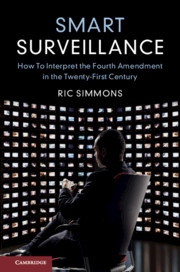Book contents
- Smart Surveillance
- Smart Surveillance
- Copyright page
- Contents
- Acknowledgments
- Introduction
- 1 The Cost–Benefit Analysis Theory
- 2 Measuring the Benefits of Surveillance
- 3 Quantifying Criminal Procedure
- 4 Reactive Surveillance
- 5 Binary Searches and the Potential for 100 Percent Enforcement
- 6 Public Surveillance, Big Data, and Mosaic Searches
- 7 The Third-Party Doctrine Dilemma and the Outsourcing of Our Fourth Amendment Rights
- 8 Hyper-Intrusive Searches
- Conclusion
- Notes
- Index
3 - Quantifying Criminal Procedure
Published online by Cambridge University Press: 02 August 2019
- Smart Surveillance
- Smart Surveillance
- Copyright page
- Contents
- Acknowledgments
- Introduction
- 1 The Cost–Benefit Analysis Theory
- 2 Measuring the Benefits of Surveillance
- 3 Quantifying Criminal Procedure
- 4 Reactive Surveillance
- 5 Binary Searches and the Potential for 100 Percent Enforcement
- 6 Public Surveillance, Big Data, and Mosaic Searches
- 7 The Third-Party Doctrine Dilemma and the Outsourcing of Our Fourth Amendment Rights
- 8 Hyper-Intrusive Searches
- Conclusion
- Notes
- Index
Summary
Chapter 3 examines the challenges of applying the cost–benefit analysis theory given the current legal stanrads used by courts. The cost–benefit analysis theory requires quantified costs and benefits, while the current legal system uses broad, descriptive standards to evaluate searches. The chapter notes that the current legal standards are inconsistently applied, and thus provide inadequate guidance to police who are attempting to follow these standards. The chapter also points out a dissonance between how judges apply the current standards and how lay people believe the standards should be applied. The solution is to quantify the legal standards, thus making the standards more transparent, allowing for a greater range of standards, and allowing the judges to use data from predictive algorithms as formal factors in deciding whether to allow a certain type of surveillance. This will also allow courts and policymakers to use the cost–benefit analysis theory more accurately and efficiently.
- Type
- Chapter
- Information
- Smart SurveillanceHow to Interpret the Fourth Amendment in the Twenty-First Century, pp. 65 - 83Publisher: Cambridge University PressPrint publication year: 2019

